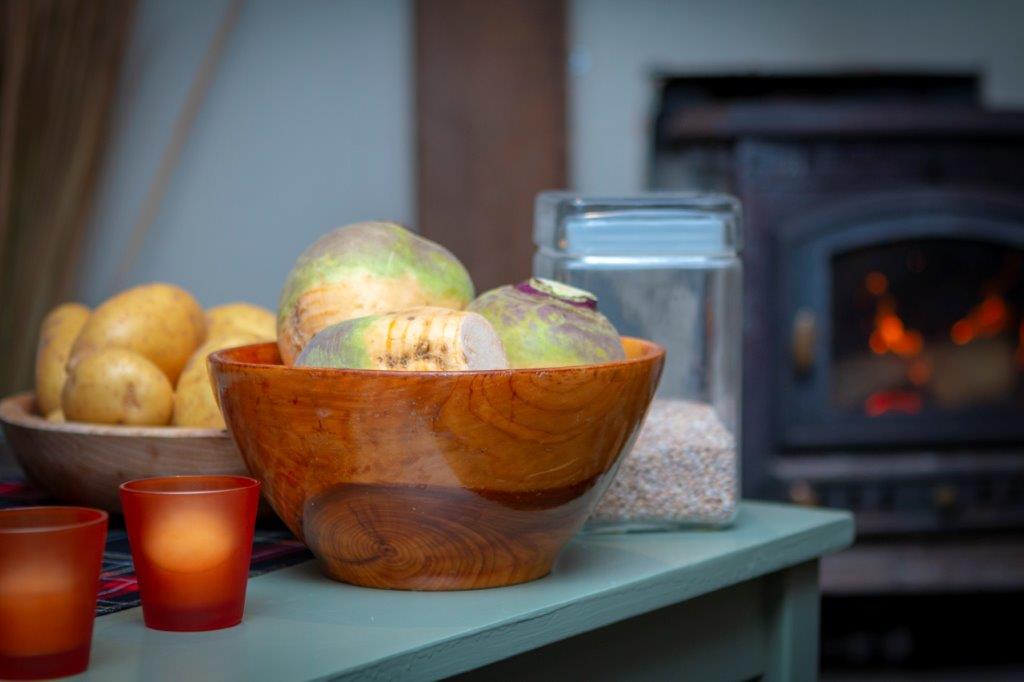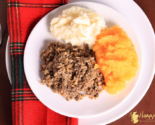
What is haggis?
Haggis is surrounded by myths and misconceptions. If you’ve put haggis hunting on your must-do list when visiting Scotland then you are in for a surprise. Haggis is not a wild furry three-legged beast of the Highlands, it is Scotland’s national dish and probably one of Scotland’s most famous icons.
Here are answers to some of the most common questions asked about haggis
What is haggis made from?
Haggis comes in two forms – traditional meat haggis and a vegetarian variety.
Traditional haggis is made from the finest lamb, beef, oats, onions and spices. It’s a great source of iron, fibre, and carbohydrate with no artificial colours.
Vegetarian haggis is a combination of healthy fresh vegetables, mushrooms, pulses, oats, onions and seeds. It is approved by the vegetarian society, is suitable for vegans too and meat lovers like it too.
Legendary haggis producers Macsween present their haggis in a sausage skin. Stalyh haggis is also in a sausage skin but it is then placed in a can for easy transportation. Grants preserve their haggis mince in a tin.
What does haggis taste like?
Imagine an oaty, spicy mince and you’ll not be far off. For traditional haggis that it. Macsween is currently causing a haggis evolution with new flavours like wild boar haggis, three bird haggis and venison haggis.
The number of people who buy haggis has been steadily increasing since the turn of the century. It is legendary haggis producers like Macsween, modern creative chefs like Thomas Kitchin and Shirley Stear, plus savvy eaters like you who have added fire to the world’s passion for haggis.
Haggis is a 21st century super food. It is full of warm, earthly flavours that tantalise the tongue and make it an excellent dish with neeps and tatties, if you wish to be traditional. And it can also be served in so many other ways.
Why is haggis served on Burns Night?
One of the greatest misconceptions about haggis is that it was created in Scotland. Haggis is actually a very ancient dish. Hunters throughout Europe and worldwide prepared meat in this traditional way. It only became closely associated with Scotland in the 18th century, and because of the writings of Scottish poet, Robert Burns.
When he wrote “Address to a Haggis”, he had no idea it would be repeated around the world every January in his honour. But in 1796, after his death, his friends organised a Burns Supper to celebrate his life and works, and the tradition continues to this day. Burns unwittingly elevated haggis from its humble origins.
No wonder Macsween likes to think of him as the patron saint of haggis.
While the 25th January is an important date, haggis can be enjoyed at any time of year. Take a look at our haggis recipes. There are sure to be some tasty ideas waiting for you there.
Can you buy haggis if you live outside of Scotland?
Oh yes, we love to share delicious haggis all over the UK. Browse our haggis range and check out our delivery guide here.

